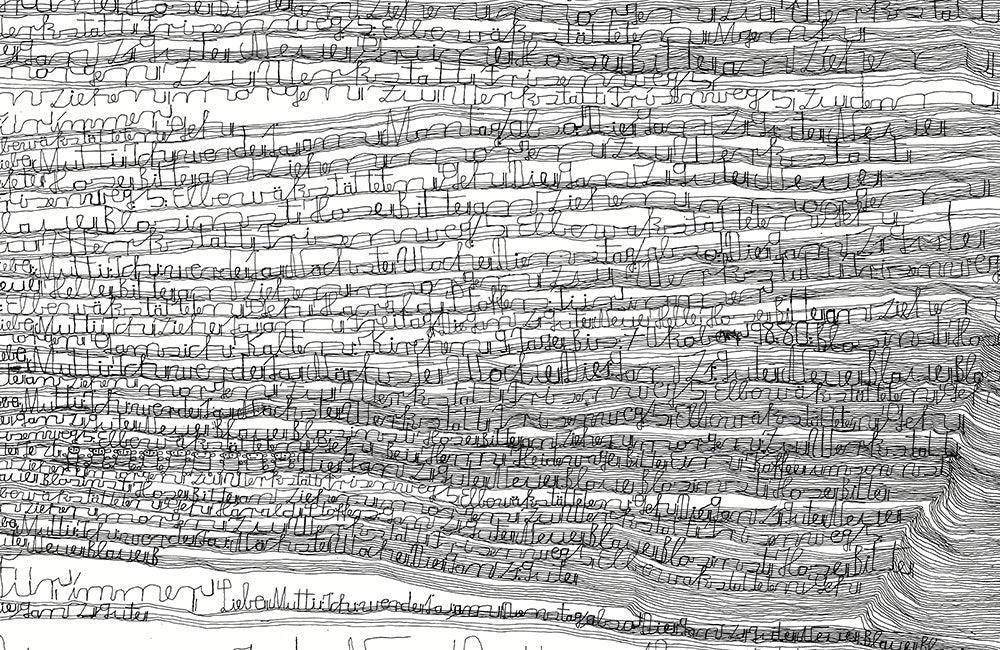First published: Fall 2008
Before he begins to write, Harald Stoffers first draws freehand guide-lines, each aligned with the preceding ones. The effect is reminiscent of the constant repetitions that occur in nature in the form of wave movements, wood grain or rock strata. Within the lines he writes, in the form of a letter, everyday notes, memos, schedules, or comments about the circumstances in which he is working. Sometimes he tears away a sentence and starts it again from scratch using the rest of the sheet of paper or the back of another piece on which he has already written. From time to time this means that he tears in half a longer sentence on the other side of the paper.

Stoffers mainly writes about things he is going to do, detailing matters such as which trousers he will wear the following day when he goes to work in the art studio at the Elbe-Werkstätten GmbH (an employment and rehabilitation centre in Hamburg, Germany for people with disabilities, mentioned in almost all his letters), at what time he will leave and from which platform, and how much money he will need to pay for a cup of coffee. Sometimes he refers to what is happening at the time of writing, for example the fact that the coffee machine has to be switched on: 'Eine Kaffee Pause Machen Wasser Aufsetzen' ('HaveCoffeeBreakBoilWater'). In this way the letters take on the quality of a performance.
Stoffers follows a set procedure in his letters which allows him do as he pleases and provides scope for the development of new ideas on impulse. This lends his work considerable variety and it also leaves it open to interpretation in different ways. It is questionable whether the words should be considered separately from the design, or whether text and imagery can only be interpreted as a single whole. What is the message, and to whom is it directed? Are letters as such not private in any case?
Writing occupies a large space in Stoffers' day-to-day life. He has been writing letters every day for more than fifteen years. Most are addressed to his mother, but he rarely actually gives them to her. Instead, he leaves them lying around for display, or he gives them to other people. Maybe they never were intended to be delivered; perhaps the letter format serves solely as a medium for recording Stoffers' thoughts. They can be seen as a diary which could be continued indefinitely, both as individual letters and as a daily need as vital for Stoffers as eating, drinking or sleeping. Stoffers writes to give himself time and space; to structure and shape his everyday life. He does this in two senses: in building a schedule for himself; and through the actual process of creating the letters.
This is an article extract; read the full article in Raw Vision #64




